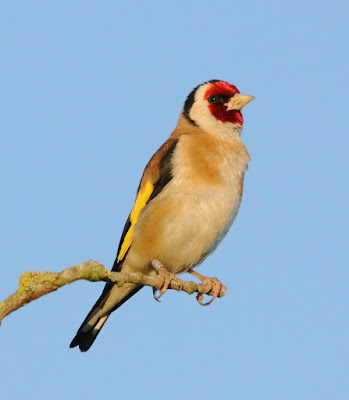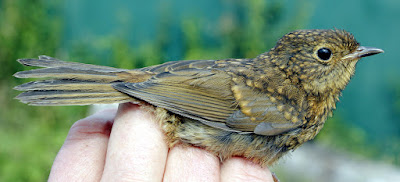Friday, and once again the week’s weather dictated a lull in ringing, birding or photography. July will surely end as one of the worst ever.
The rain held off long enough for Andy and I to meet up at Gulf Lane on Thursday to cut a net ride for the continuation of our Linnet project. While doing so we noted a flock of 40 Linnets and several Tree Sparrows using the crop of bird seed mix. Such a relatively high number of Linnets in a flock situation in July suggests that many Linnets have finished their breeding season and that numbers will climb quickly in the coming weeks. We will set a few nets just soon as the weather reverts to summer or at least a settled autumn feel.
Linnet
We called at another farm where the owners regularly see Barn Owls and now wish to attract the species to breed. We looked around the many buildings and suggested a couple of spots where suitable boxes might be erected, using plans and ideas found on www.barnowltrust.org.uk.
The Barn Owl Trust website is a useful and informative for farmers and landowners looking to attract owls onto their property. There is lots of practical advice on nest boxes plus guidance on how and where to locate a box for best results. For the lazy or like me, the simply unskilled at woodworking, they sell nest boxes ready assembled and suitable for Barn Owl, Tawny Owl or Little Owl.
Barn Owl nestbox
In a couple weeks we’ll call back at the farm and see how their work is progressing. Fingers crossed for a suitable outcome for owls, famers and ringers alike.
Barn Owl
I called at Conder Green where the wind whipped across the pool and many Lapwings sheltered on the grassy island. I had a good count of returning Black-tailed Godwits - 46 to add to the 140 Lapwing, 40 Curlew and 30 Redshank, but no show from either Greenshank or Common Sandpiper. In the choppy conditions I noted just a single Little Grebe but expect more were sheltered in the lee of the islands. Three Pied Wagtails and 2 Stock Dove around the margins, plus 2 Little Egret partially hidden from sight.
There was a Tufted Duck with five fluffy youngsters and I think this was a different female to the one noted here a week earlier with just four young. The family swam across the water to avoid marauding Carrion Crows looking for a meal.
Tufted Duck
A Kingfisher put in a brief appearance low down in the channels and out of the wind. Sand Martins rather liked the conditions as 40 or more plus a few Swallows flew continuously up, down and around the hawthorn hedgerow to pick off the many highly visible flying midges.
Saturday morning looks slightly better and I’m sure I will be out somewhere or other bins and camera at the ready. Read about it here soon.
Linking today to Stewart's World Bird Wednesday, Anni's Birding and Eileen's Saturday Blog.
Linking today to Stewart's World Bird Wednesday, Anni's Birding and Eileen's Saturday Blog.





















































































